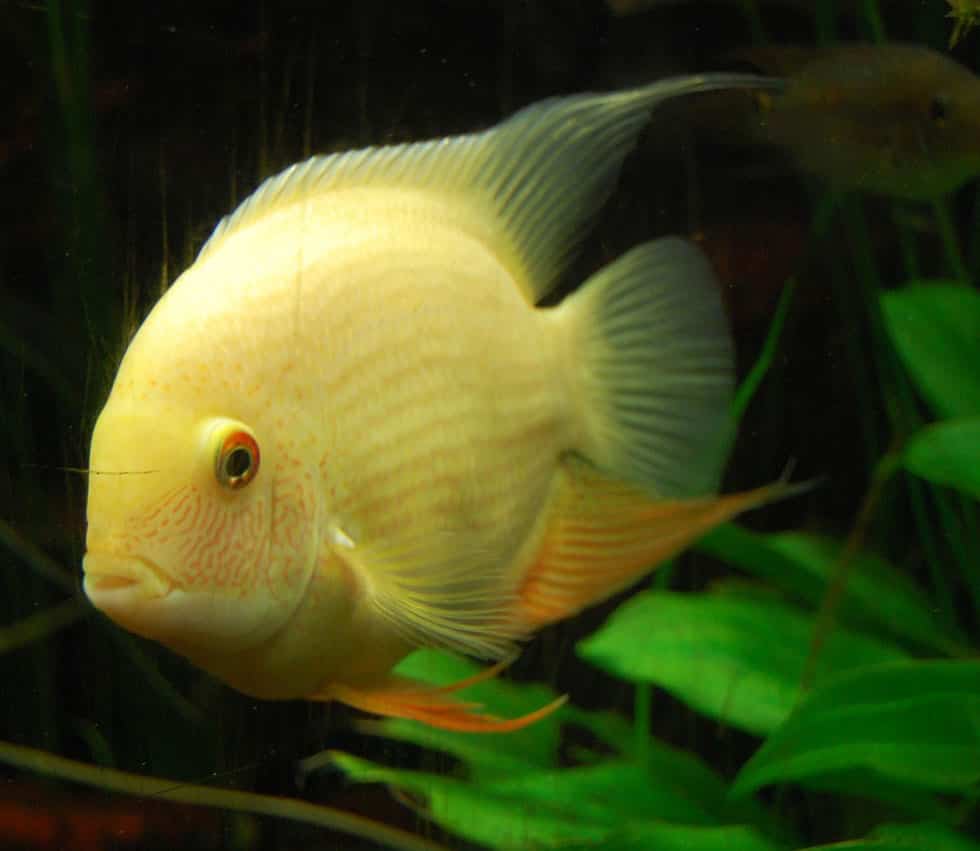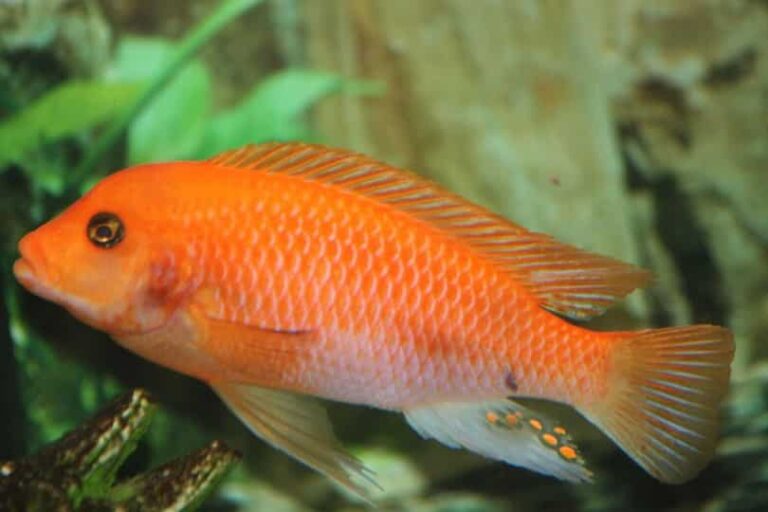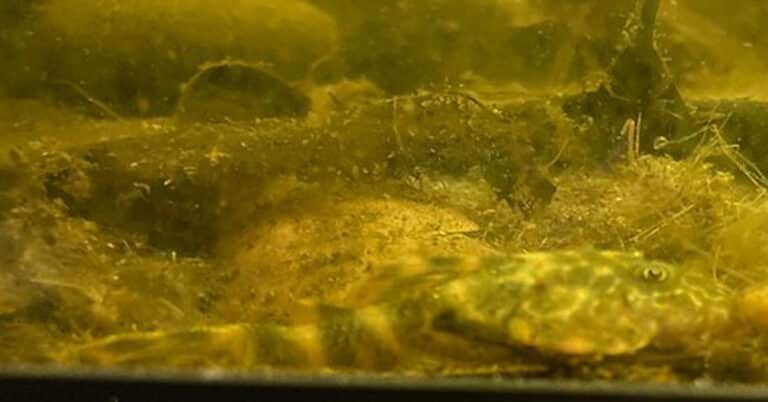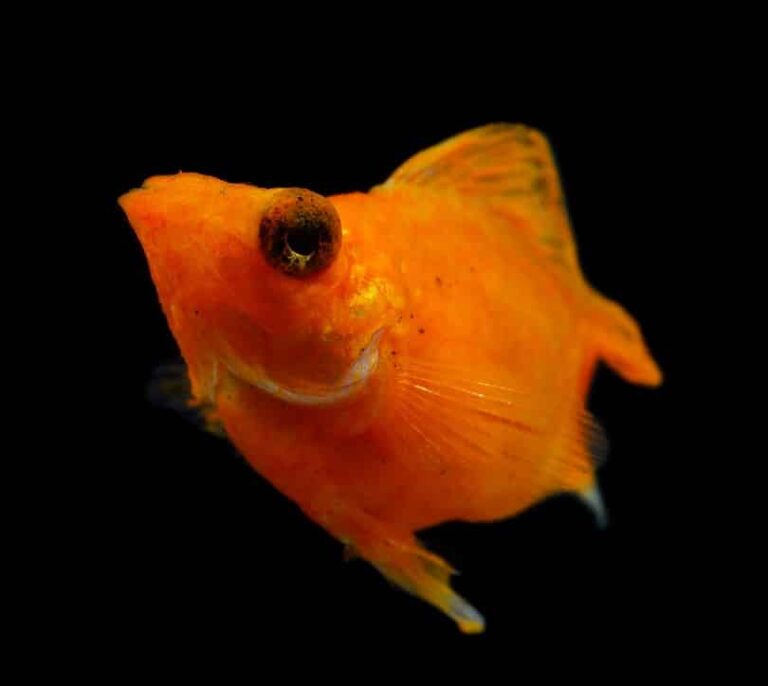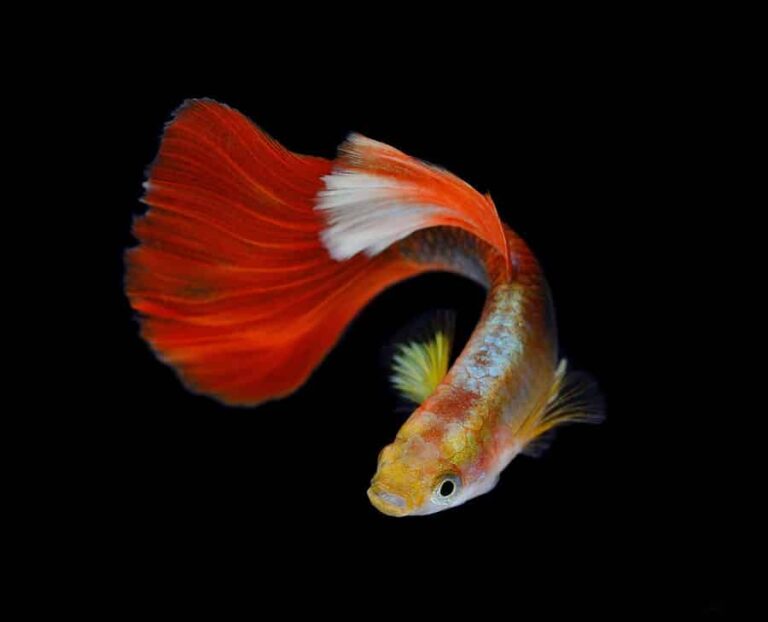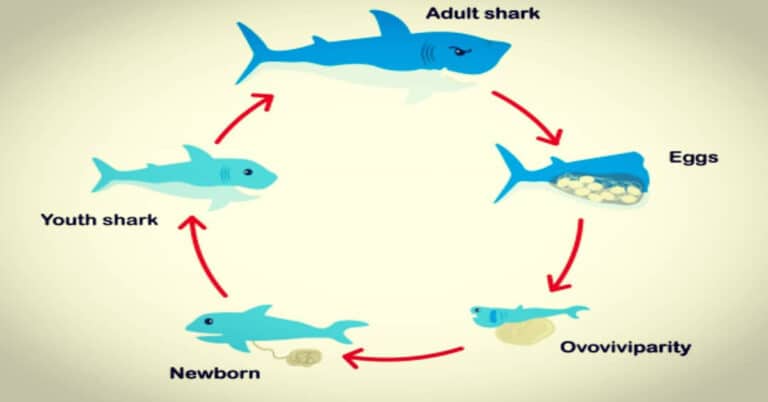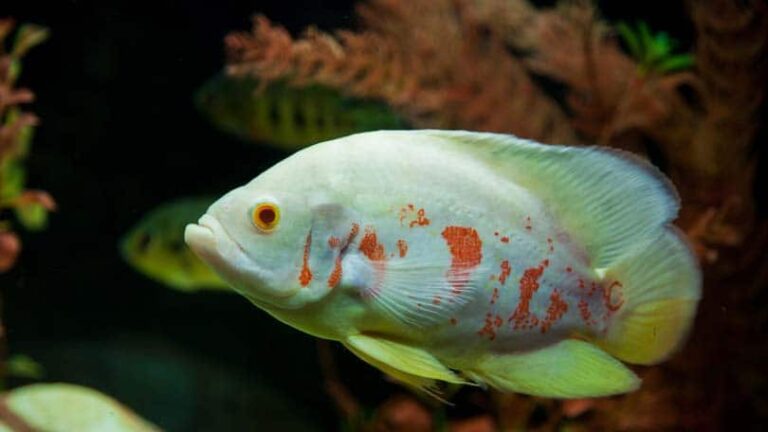Cichlid Fish
Scientific Classification
| Kingdom: | Animalia |
| Phylum: | Chordata |
| Class: | Actinopterygii |
| Order: | Perciformes |
| Suborder: | Labroidei |
| Family: | Cichlidae |
Cichlid fish belong to the Perciformes order and Cichlidae family. They are very popular among freshwater fish hobbyists. The family is vast and diverse with more than 1650 species scientifically described. There is still an estimation of more than 2000 species undiscovered. Hence, it is considered one of the largest families of vertebrates. These are very active and attractive species of fish suitable for fish aquariums at home. They are very popular among pet shops due to their amazing characteristics
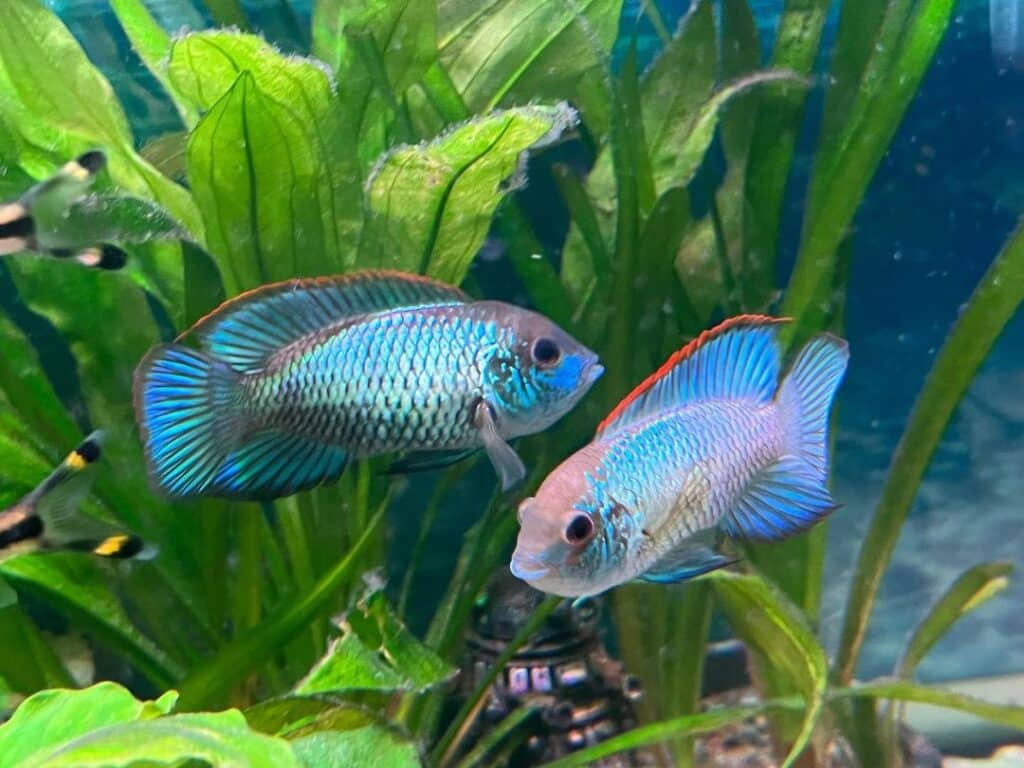
Description
These vast family members can be seen in diverse body size, structure and shape. The smallest Cichlid found is about 2.5 cm, termed as Neolamprologus Multifasciatus, and the largest one is Boulengerochromis with a body length of 1m. Similarly, the compressed body structure can be found in some species like Pterophyllum, Altolamprologus and Symphysodon, whereas the cylindrical and elongated body structures can be found in species like Teleogramma, Crenicichla, Julidochromis, Gobiocichla and Crenicichla. But generally, the Cichlid species have a mid-size ovate body that is compressed laterally. These fish are similar to the sunfishes of North America in terms of ecology, morphology and behavior.
Some Cichlids like the Tilapia are popular as a food source, whereas some are considered as game fish like the Cichla species. This family also consists of famous aquarium fish like Angelfish, Discus and Oscar. The Cichlid family, especially the Haplochromine group, consists of some species that are reaching the verge of extinction. Among the vertebrates, the Cichlid group has the most number of endangered species. The Cichlid family is vast with many species due to its capability to evolve rapidly with morphological differences, but closely related species in the freshwater lakes. This group of fish is mainly found in the Malawi, Tanganyika, Victoria and Edward Lucas.
Distribution and Habitat
Cichlid species are mostly found with diverse features in South America and Africa. In Africa itself, more than 1600 species inhabit the freshwater bodies. Mexico and Central America consist of more than 120 species of Cichlid. Cichlid like Oxylapia, Paretroplus, Ptychochromoides, Katria, Paratilapia and Paretroplus are the distantly related species of the African inhabitants, and have been commonly found in Madagascar. Local species are missing in the Asian regions, other than the 9 species seen in Syria, Lebanon and Israel. Only one species is present in Iran, whereas three species are present in Sri Lanka and India. Exotic species of Cichlids can be found in Florida, Australia, Japan and Mexico.
Most of the species are freshwater survivors. Some rare species like Cichlasoma Urophthalmus can survive in all types of water. They can be equally bred at home in freshwater as well as mangrove swamps. Some species can also be found in the mangrove belts situated around the barrier type of islands, whereas some can be seen in the brackish coastlines situated between the rivers. Most of them prefer to settle in the shallow depth of the water, but there are exceptions. Some species like Pallidochromis Tokolosh and Alticorpus Macrocleithrum are found at a depth of 150m, but some like the whitish and blind Lamprologus Lethops are believed to inhabit a depth of more than 160m.
Types
Cichlid is mainly classified on the basis of the continent where it is found. Thus, they can be classified mainly into two groups, African Cichlid and South American Cichlid.
African Cichlids
The African Cichlids found in the rift lake, are the most colorful and popular freshwater fish. Not only are they famous for their colors, but some are highly valued for their unique patterns and body structures. Most of them attain a big size suitable for big showy tanks, but cannot be placed in the home aquarium. Some of the commonly kept Aquarium African Cichlids are-:
- Lake Malawi Cichlids
The Cichlids found in the Malawi lake are commonly known as Lake Malawi Cichlids. They are beautifully colored fishes that come from the family having more than 800 species. This group is again classified into two different ecological groups, namely, - Mbuna group
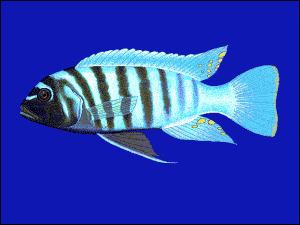
This group of Cichlids is endemic to the rocky areas situated in the lake. Example is Zebra Cichlid
- Haplochromis group
Peacock Cichlid
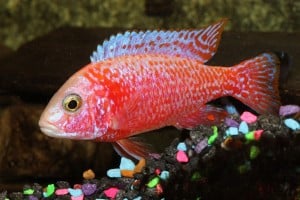
This group of Cichlid fish inhabits the sandy area in the lake and open water habitat. Example is Peacock Cichlid.
- Other Malawi Cichlid
The Utaka Cichlid
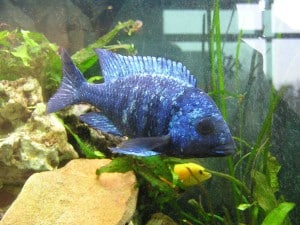
These Utaka Cichlid fish are endemic to the open water habitat.
Lake Tanganyika Cichlids
The Lake Tanganyika has more than 250 species of Cichlids with diverse appearance and behavior. This lake is popular for housing both, the largest and the smallest Cichlids. The largest Cichlid species having a body length of 31 inches, as well as the smallest in this group having a body length of 1.4 inches, both are endemic to the second deepest lake in the globe, Tanganyika Lake. This type can be classified on the basis of their natural habitat.
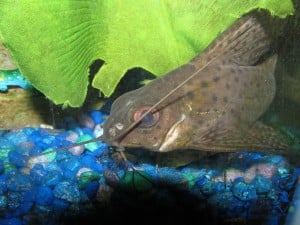
This group consist of those Cichlid having unique habitat and body shape. Examples are jobs, Julies, Featherfins, Shell Dwellers and Sardines.
Tropheus Cichlids
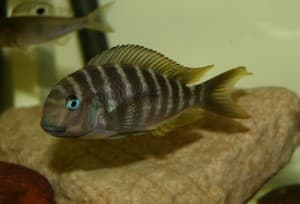
These Tanganyika Cichlids are popular ones, and basically found in the sandy areas and open water habitats. This species are more peaceful and larger compared to the Zebra Cichlids.
Lake Victoria Cichlids – West African Dwarf Cichlids, West African Cichlids
Other than the vast population of Cichlid species in the Lake Malawi and Tanganyika, a varied variety of beautiful Cichlids can be found in the West African regions, like Madagascar islands and Victoria Lake.
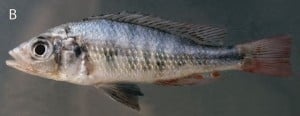
Lake Victoria Cichlids. Photo: de Zeeuw M, Westbroek I, van Oijen M, Witte F
This lake houses several species of Cichlids with vibrant colors and structures. The other species of the East African Cichlids and the species of the Lake Victoria Cichlids can be found in the adjacent water bodies of Lake Victoria.
Dwarf Cichlid-West African Cichlid
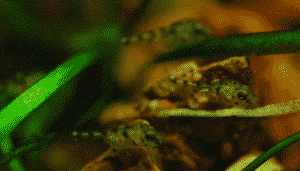
These are small and very attractive fish loved by the fish hobbyists. They are suitable for fish aquarium due to their small size and peaceful nature. Example is Kribs species.
South American Cichlids
This group of Cichlids is also termed as New World Cichlids that includes Cichlids from Central America and Dwarf American Cichlids. This species is generally found in the southern and central part of the Americas. These are very attractive and easy breeding fish. A wide variety of color combinations and different ranges of size are displayed by this species.
\The South American Cichlids are grouped into-:
Large Cichlids – Large South American Cichlids
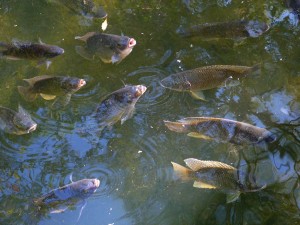
As the name suggests, these American Cichlids grow in large size. They are best suited as a specimen in a large show tank. Their personalities and temperament attract a lot of fish hobbyists. The suitable tank size for these species is around 75 gallons in which they can comfortably survive.
Dwarf Cichlids – South American Dwarf Cichlids
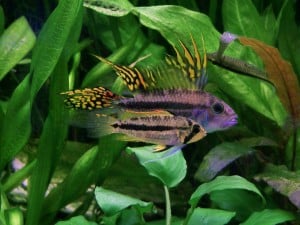
This Dwarf Cichlid fish is also referred as the New World Dwarf Cichlid. Basically, these fish are small in size and attain only up to 4 inches. They are suitable for keeping at home that can add to the charm to your fish tank with their distinctive coloration and patterns. They are a very shy type and delicate by nature, hence they are not recommended for the beginners in fish keeping.
There are a lot of other Cichlid species in the South American region that possess more popular fish than any other type of Cichlid due to these characteristics. Some of those unique fish with attractive features are-:
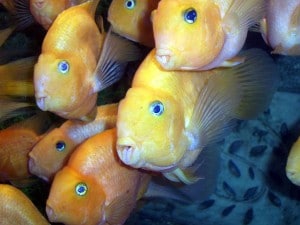
- Angelfish
- Blood Parrot Cichlid
- Flower horn Cichlid
- Discus
Reproduction
The Cichlid fish are easy to breed even in captivity. They are either monogamous or polygamous in nature. All the species exhibit some type of parental care for their young ones. Before spawning, they too undergo many courtship rituals. They turn territorial in the breeding period, and try to protect their territory. These fish brood in various ways like-:
Open Mouth Brooding
The Cichlids following the open brooding system lay eggs on the rocks, logs, leaves or on any substrate found in the open surroundings. The male Cichlid tries to defend the territories and the female fish splash the water by fawning over the eggs. Both exhibit the parental behaviors towards the young ones. Examples of Cichlids of open-brooding type are the Symphysodon, Pterophyllum and Anomalochromis Thomasi species.
Cave Brooding
The cave-brooding type secretly lays eggs in crevices, caves , holes or old mollusk shells. They attach their eggs to the ceiling of the chamber. The parents and the young ones swimming freely meets in the wild or in secretive places. The parents assist their kids in finding the source of food. Examples of such Cichlids are Apistogramma, Archocentrus and Pelvicachromis.
Ovophile mouth-brooding
Ovophile mouth-brooders lay eggs and incubate them in the mouth of the egg laying fish itself. This is done as soon as the eggs are laid. This process takes place for several weeks. Examples are Maylandia, Tropheus, South American Cichlids, Astatotilapia Burtoni, and Pseudotropheus.
Larvophile mouth-brooding
Larvophile mouth-brooders, like the other fishes lay eggs on the surface of leaves, wood, or any substrate or in the hidden places like caves ad hollows. But after the eggs hatch, the parents take the larvae present in the hatched eggs in their mouth. Mostly the egg brooders are the female counterpart. But there are exceptions, in the Eretmodine Cichlid, Sarotherodon and Aequidenlay species, the eggs are brooded by the male fish. The examples of Larvophile mouth-brooders are Oreochromis mossambicus, Aequidens, Oreochromis niloticus and many more.
Cichlids at Home
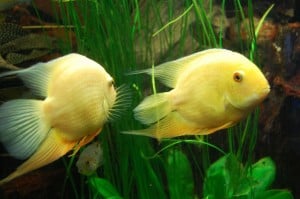
Food
Cichlids are known as avaricious eaters. They have the ability to ingest q large quantity of food in a short time period. At home, we should be very conscious of what we are providing them with. They should be given healthy food in proper proportion and intervals. Provide them only a little quantity of food that can be consumed within 30 seconds or less. Cichlids can be categorized into 4 groups, namely Carnivorous, Herbivorous, Omnivores and Micro-predators. The Carnivorous Cichlids eat other smaller fish or fry of different species. The Herbivorous Cichlids are grazers and prefer to feed on the algae grown on the rocks. The Omnivorous Cichlids eat a variety of food like invertebrates, plant matter and small fish, whereas, the Micro-predator Cichlids prey on small invertebrates like plankton and Artemia.
Basically the Cichlid foods available are suitable for all types of Cichlid, irrespective of their eating nature. The herbivorous can be fed with food consisting of vegetables like carrots, peas, zucchini, romaine lettuce and spinach. They can also be supplied with a pellet diet that is highly nutritious. For the other types of Cichlids, live and frozen food like blood worms and planktons can be included in the diet. A flake diet is also suitable for all types of Cichlids.
Water
These freshwater Cichlids should be placed in hard water. If you can arrange only soft water in your fish tank, then you can add some Aragonite (grounded coal piece) to make it hard. The required hardness should be between 10 to 20 dH. The habitat that most of the Cichlid like, are a little salty, for which, you can add aquarium salt. Adding the salt has other advantages like controlling diseases in the tank, and relieving the stress of the Cichlid fish. The required pH level should be generally about 7.5 to 9.0. For each species, there is a slight variation in the general pH level . Please see below,
Lake Malawi- 7.4 to 8.4
Lake Tanganyika- 7.8 to 9.0
Lake Victoria- 7.2 to 8.6
To maintain a high pH level in the water, decorate the tank with shells and corals which help to push the level of pH in the freshwater aquarium. You can also use the buffers available in the market known as “Cichlid Buffers” to boost the pH level. “Trace Elements” and “Cichlid Salts” are also available from the same manufacturers who provide Cichlid Buffers. These are recommended for addition in the aquarium water to provide them the exact natural habitat from which they come, and thereby develop good colorations and body patterns similar to the ones found in the original habitat. The temperature is not a big concern for this fish as it can adjust in any temperature. The preferable temperature should be about 25 to 28 degree C.
Tank
The next important aspect in keeping Cichlids is the size of the fish tank. A large fish tank is preferable to allow enough space for swimming. The other advantage of large tanks is that they can be easily stabilized and maintained stable for a long time compared to the smaller ones. Hence the minimum size of the tank should be at least 30 gallons. If you are planning to breed an African Cichlid, then you will have to decorate your tank with enough rock and rocky materials to make them feel like they are in their own natural habitat. Equip the tank with metal heaters; the larger species will break the glass heaters. Lighting in the tanks is not a must, as most of the species are bottom dwellers. Pebbles are more preferable than the gravels as a substrate, as there are chances of Cichlids swallowing the gravels. A canister filter is highly essential for a fish tank full of Cichlids, because the amount of ammonia can only be controlled by such powerful filters.

Having discovered a fondness for insects while pursuing her degree in Biology, Randi Jones was quite bugged to know that people usually dismissed these little creatures as “creepy-crawlies”.

